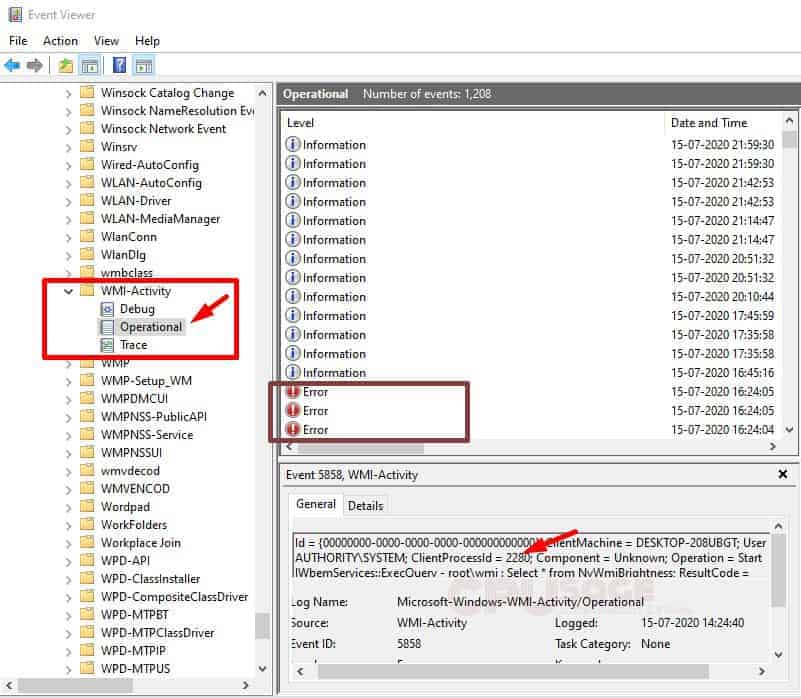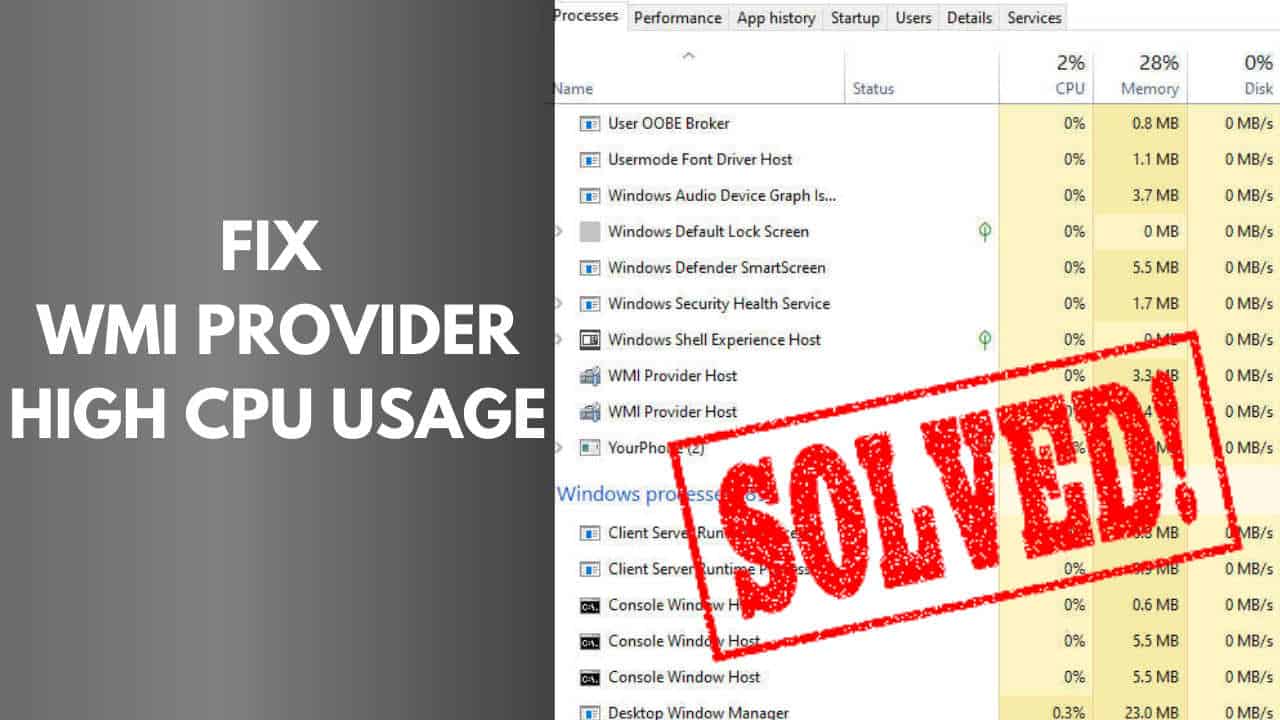Most Windows users aren’t familiar with processes like the WMI Provider Host, but that doesn’t mean they aren’t important to the operating system. The WMI Provider Host, like other essential processes like csrss.exe, shouldn’t be something you need to worry about unless it causes excessive CPU or RAM utilisation.
The WMI Provider Host process should not be a reason for concern because Windows would not function properly without it. If wmiprvse.exe has issues, it could indicate a larger problem, such as a malware infection. Here’s everything you need to know about Windows 10’s WMI Provider Host procedure.
What is a WMI Provider Host?
The WMI Provider Host process functions as an information relay, providing information on how Windows is currently performing to various running programmes and system services that need it. These requests are handled by WMI Providers, which are in charge of disseminating specific bits of system data.
The Event Log Provider, for example, would provide access to the Windows event log if another service required it. Also, WMI providers aren’t just for Windows services. Third-party apps and services that offer information to other apps and services can be developed using WMI Providers.

This type of management solution can be beneficial, particularly if you’re in charge of a large number of Windows devices. The WMI Provider Host is at the top of the chain (wmiprvse.exe). Each of these WMI providers is controlled by this process.
Because the data given by WMI Providers is required by other services to guarantee Windows is running properly, it is likely that Windows will stop working without it.
Is WMI Provider Host secure, and can it be turned off?
While it’s natural to be interested about unfamiliar Windows processes, you can relax: WMI Provider Host is a completely secure Windows process that should be left running. Any attempt to deactivate the WMI Provider Host process, in fact, could have unforeseen repercussions.
These critical system processes aren’t operating by accident; they’re meant to keep Windows functioning smoothly. The WMI Provider Host, in particular, delivers extensive system information to other programmes. Your PC may believe that a critical system breakdown has happened if you don’t provide this information.
This could result in a “critical process died” BSOD message, which will crash your computer and prevent it from working. If the process is causing problems, it’s most likely because it’s communicating with another software or service, which you should stop or disable instead. With this in mind, the solution is obvious: WMI Provider Host cannot be disabled and should not be attempted.
The only exception is if another process named “WMI Provider Host” isn’t the genuine one. Some malware has been known to imitate vital processes in order to deceive consumers during a cursory look through Windows Task Manager. Fortunately, there’s a simple way to see if this is the case, as we’ll show you in the section below.
Troubleshooting Techniques
It’s unusual to find a WMI Provider Host with high CPU concerns during normal PC operation. The wmiprvse.exe process is usually idle, waiting to handle information requests. A request for information from a WMI Provider to another app or service could be the cause of a spike in CPU usage.
If you’re running Windows on an older, slower PC, this may be unavoidable, but if the WMI Provider Host reports high CPU consumption for an extended length of time, you should look into it further. From the Event Viewer, where error and warning messages from WMI Providers are logged, you can see which processes are using the WMI Provider Host service.
You can use this information to track down the other software or service that is causing the WMI Provider Host to utilise more CPU than usual.
- To do so, right-click the Start menu and pick “Run” from the menu that appears.
- Type eventvwr.msc into the Run window, then click OK to open it.
- From the left-hand navigation menu in the Event Viewer window, open applications and services logs (Microsoft Windows WMI-ActivityOperational)
- Look for recent events (labelled “error”) that could hint at a process in the middle part.
- Select a reported error, then look for the ClientProcessId number in the information section below, which is provided under the General tab.
By opening Windows Task Manager and entering the ClientProcessID number, you can discover the matching process that is creating problems. To do this, right-click the taskbar at the bottom and select Task Manager. Open the Details tab in the Task Manager window, then look for the entry with a PID number that matches the ClientProcessID from the Event Viewer.
Once you’ve identified it, you can try to end, deactivate, or uninstall the process that’s causing WMI Provider difficulties. If it’s a different Windows system process, you might need to look into troubleshooting your Windows installation further, such as correcting faulty system files.
Identifying a Legitimate WMI Provider
The WMI Provider Host process in the Windows Task Manager is, or should be, a Windows system process. By tracing the process’s file location, you can see if this is the case (and if a virus or other sort of malware is hidden in plain sight).
- To do so, right-click the taskbar at the bottom of your screen and pick Task Manager from the menu that appears.
- Find the WMI Provider Host process in the Processes tab of the Task Manager window (or wmiprvse.exe in the Details tab).
- Select Open file location from the context menu when you right-click the process.
- This will open Windows File Explorer and navigate to the WMI Provider executable file’s location.
- The C:WindowsSystem32wbem folder should contain this.
If it is, the process on your computer is a genuine Windows system process. If File Explorer opens to a different place, you have an issue because the process running in the Windows Task Manager is not the real system process. As part of your following steps, you’ll need to look for and remove the virus to guarantee that your PC is safe to use.
Windows System Processes: An Overview
Hundreds of secret executable files keep your Windows installation running, including the WMI Provider system process. It cannot be disabled, and attempting to delete or stop it may cause Windows to crash, requiring you to erase and reinstall Windows if you are unable to resolve the issue. System processes with high CPU usage, such as wmiprvse.exe and dwm.exe, can indicate a variety of problems with your PC, ranging from dusty PC fans to malware infection. If a process in the Windows Task Manager appears unusual, it doesn’t necessarily mean you should scan for malware, though it wouldn’t hurt.




